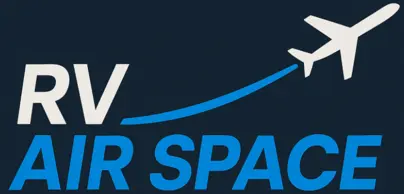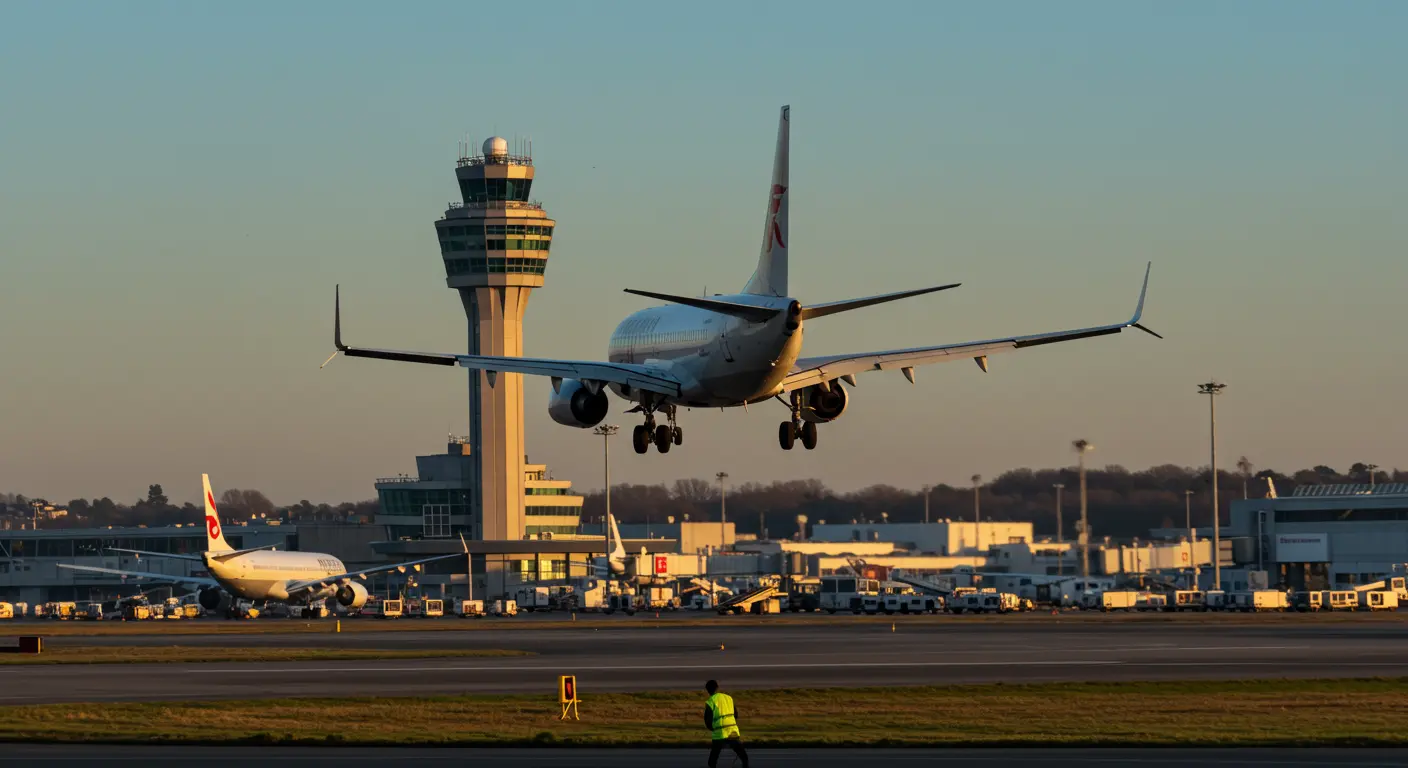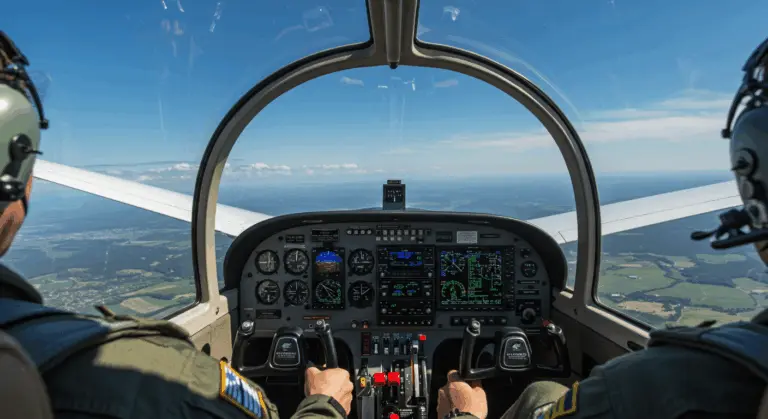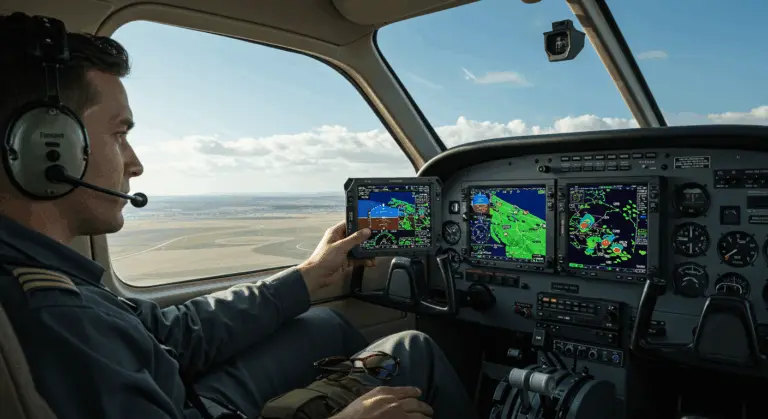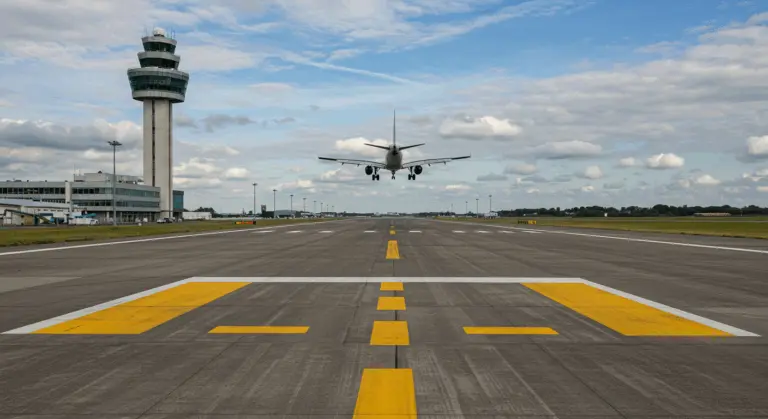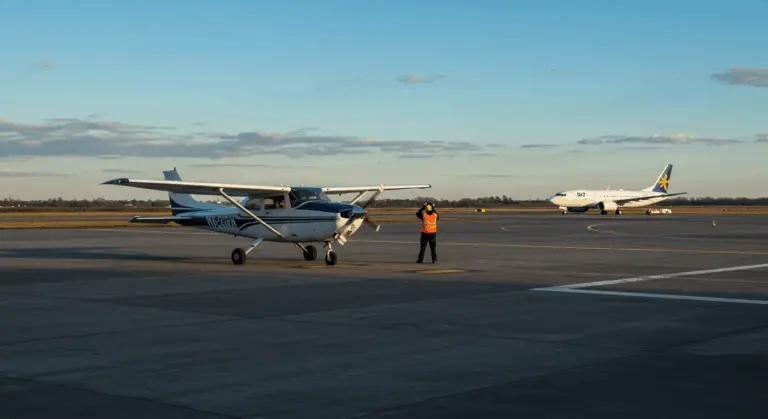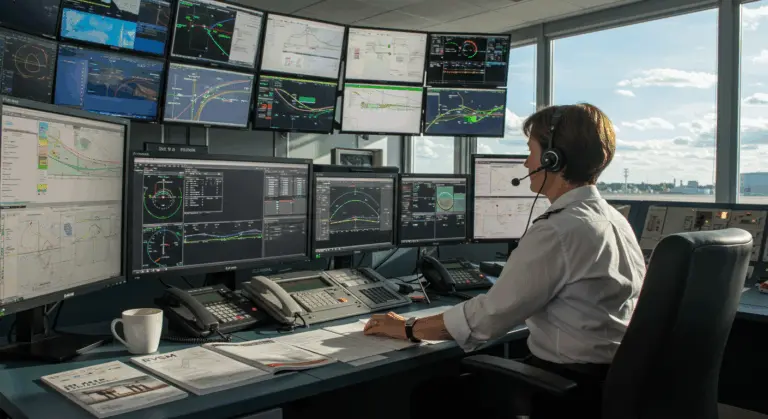When is a Go-Around Appropriate in Aviation?
Understanding the Go-Around Procedure
A go-around represents a critical safety maneuver that allows pilots to abort a landing at any stage during final approach—even after the wheels have touched down. This procedure acts as a crucial safety measure when continuing with the landing would compromise safety.
The pilot immediately applies full power, establishes a positive climb rate, and systematically reconfigures the aircraft’s flaps and landing gear. This coordinated sequence transforms the aircraft from its descent trajectory back into a climbing attitude, preparing for another—and safer—landing attempt.
Whether initiated by the pilot or requested by air traffic control (ATC), a go-around demonstrates good decision-making, not pilot error. Key triggers include:
Common Triggers for a Go-Around
Unstabilized Approach – A Key Trigger
Unstabilized approaches are some of aviation’s most dangerous scenarios, particularly during non-precision approaches featuring step-down fixes inside the final approach fix (FAF). These situations demand multiple, simultaneous adjustments that can quickly overwhelm even experienced pilots.
The primary risk comes from their strong correlation with Controlled Flight Into Terrain (FIT) events. When an aircraft becomes unstabilized, pilot workload skyrockets—thrust adjustments, pitch corrections, and altitude management must all happen simultaneously. This combination increases the likelihood of critical errors precisely when the margin for recovery is razor-thin.
Specific hazards from unstabilized approaches include:
-
Extended low-altitude flight, increasing exposure to terrain and obstacles.
-
Incorrect approach angles, risking an undershot (too shallow) or making energy management difficult (too steep).
-
Late runway acquisition, leaving insufficient time to align the aircraft and assess landing conditions.
During an unstabilized approach, the crucial transition from instrument to visual flight becomes severely compromised by excessive workload. Understanding these risks, industry standards now mandate a go-around whenever an approach fails to meet stability criteria.
Runway Obstruction and Safety
Runway obstructions—whether other aircraft, ground vehicles, wildlife, or debris—pose immediate and serious safety threats. When such hazards are spotted by either the pilot or ATC during final approach, a go-around is necessary to prevent potentially catastrophic runway incursions.
Related runway safety incidents include:
-
Runway Excursion: The aircraft veers off the side of the runway.
-
Runway Overrun: The aircraft cannot stop before the end of the runway.
-
Runway Undershoot: The aircraft touches down before the runway threshold.
-
Runway Incursion: Unauthorized presence of an aircraft, vehicle, or person on the runway.
Runway confusion presents another serious hazard, where pilots mistakenly identify a taxiway as their intended runway. This dangerous mix-up has triggered numerous incidents and represents a compelling reason for executing a go-around, particularly during night operations or in reduced visibility conditions.
Effective runway safety requires clear markings, proper lighting, and standardized procedures. When any element of this critical system fails or becomes compromised, pilots must not hesitate to initiate a go-around. Safety takes priority over schedule, and this approach underlies aviation’s remarkable safety record.
Weather Conditions Impacting Go-arounds
Weather continues to present significant challenges for pilots. Rapidly deteriorating conditions during an approach often necessitate a go-around, particularly when faced with scenarios such as:
Executing a Go-Around: Step-by-Step
Executing a successful go-around requires quick, precise action following a specific sequence that safely transitions the aircraft from landing configuration into a climbing attitude. Here are the key steps:
-
Power: Immediately apply full takeoff/go-around thrust to halt the descent and initiate climb.
-
Pitch: Simultaneously establish the correct pitch attitude (typically 5–15 degrees nose-up) to achieve target climb airspeed.
-
Configuration: Once positive rate of climb is confirmed (“positive rate”), retract landing gear. Then systematically retract flaps according to manufacturer’s schedule as airspeed builds.
-
Communicate: Promptly notify Air Traffic Control with the standard call: “Going around.”
-
Navigate: Maintain runway heading or execute the published missed approach procedure, climbing to assigned altitude.
Power Application and Climb Management
Common Mistakes During Go-arounds
Go-arounds occur infrequently enough that even seasoned pilots can stumble during execution. The most common—and dangerous—mistakes include:
-
Delayed Decision: Hesitating or failing to recognize go-around necessity due to “get-there-ITIS”—that dangerous fixation on completing the landing that erodes safety margins.
-
Improper Power Management: Applying insufficient power to arrest descent, or conversely, applying it so aggressively that control becomes compromised.
-
Configuration Errors: Retracting gear before establishing positive climb, or mismanaging flap retraction, resulting in dangerous lift loss.
-
Loss of Situational Awareness: Becoming overwhelmed by competing tasks, leading to altitude or heading deviations and missed ATC communications.
-
Loss of Control: The combination of high power settings, configuration changes, and pitch adjustments can trigger aerodynamic stalls or FIT if not managed with precision.
Recognizing the Need for a Go-Around
Conclusion: The Importance of Go-arounds
The go-around is fundamental to aviation safety—never a mark of pilot failure, but rather a demonstration of sound judgment and dedication to safety. It represents the correct choice whenever doubt clouds the landing decision.
The aviation industry has worked to normalize go-around procedures to combat the inherent risks of the landing phase, where nearly half of all accidents occur. By removing any stigma from this maneuver, this creates an important safety margin that saves lives.
Contemporary pilot training focuses strongly on both go-around decision-making and flawless execution. Pilots learn to approach every landing mentally prepared for the possibility of a go-around, ensuring swift and smooth transitions when circumstances demand it.
Ultimately, the go-around reflects aviation’s fundamental safety philosophy: when in doubt, choose the conservative path. It provides a standardized escape route from hazardous situations, supporting the principle that sound judgment—not boldness—ensures a long and successful flying career.
